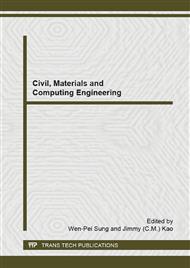p.930
p.935
p.938
p.942
p.946
p.950
p.954
p.958
p.963
Application of TRIZ in the Innovative Design of Pneumatic Exhaust Devices
Abstract:
This paper presents an innovative design of pneumatic exhaust devices,in order to solve the problems of excessive weight and slow movement of traditionalelectric exhaust devices. The research method was TRIZ. The inventionprinciples for systematic innovative design were identified by using improvedand worsened parameters of the contradiction matrix. The pneumatic exhaustdevice was 5 kg, and operated for 30 minutes at 1800RPM per 10kg of air amount.Its purpose was used to rescue persons trapped by dense smoke within shorttime. The proposed invention can be applied to dense-smoke place wherecombustible gas may leak, because the traditional electric exhaust devicesgenerate spark during operation which may cause gas explosion. Moreover, theproposed design uses pneumatic exhaust devices, which are especially used inplaces where gas explosion may occur, and has the advantages of flexibility, safety,and portability. The proposed design is an excellent fire protection device,and can be used to rescue persons trapped by dense smoke and fire within shorttime.
Info:
Periodical:
Pages:
946-949
Citation:
Online since:
December 2014
Authors:
Keywords:
Price:
Сopyright:
© 2015 Trans Tech Publications Ltd. All Rights Reserved
Share:
Citation:


